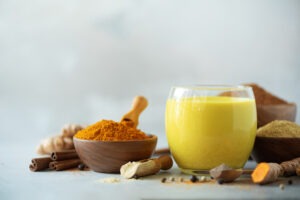Latest Trends: Shilajit
Shilajit – Ancient Mountain Resin to Modern Functional Ingredient
Every so often, an ingredient you’ve barely noticed suddenly seems to be everywhere, and for me, that was Shilajit. Last Christmas, my brother, who doesn’t take supplements and has hardly ever shown interest in them, mentioned he was considering gifting a bottle to our parents. I’d heard the name before, but I quickly realized I didn’t know much more about it.
That conversation set things in motion, and just like when you learn a new word and suddenly hear it three times in a week, for me Shilajit kept showing up, from the trade-show floor and a surprising number of health podcasts. This tar-like, mineral-rich resin, traditionally sourced from the Himalayas, has been part of Ayurvedic practice for centuries. In many ways, Shilajit is a timeless ingredient. It’s rooted in centuries-old tradition, yet versatile enough for modern formulations. It’s complex enough to spark scientific interest, and does it all without losing its identity.
Shilajit’s story starts in the Himalayas, where it has been used for centuries in Ayurvedic practice as a restorative substance. However, in the modern supplement space, heritage alone doesn’t make something relevant, but it can spark curiosity. While my own background is more rooted in human nutrition, integrative medicine, and the fitness industry, opposed to Ayurveda, it’s hard to ignore the historical weight behind an ingredient that’s been around so long. With Shilajit, that long tradition now seems to find itself intersecting with a growing interest in its bioactive compounds, making it worth a closer look from today’s formulators.
What the research has begun to show is that Shilajit has a rather unique profile. Its most studied component, fulvic acid, is a natural chelator that helps transport minerals and other nutrients at the cellular level. It’s also being investigated for its role in supporting mitochondrial function, (the powerhouse of the cell), which connects to potential applications in performance and longevity.1 Other compounds, such as dibenzo-α-pyrones, have shown antioxidant and possible neuroprotective effects in early studies.2 The evidence base is still developing, but current findings point toward roles in areas with high consumer interest, such as cognitive health, physical performance, recovery, and healthy aging.
Ayurvedic and adaptogenic ingredients have been carving out steady growth in the U.S. supplement market. In 2023, herbal supplement sales reached $12.55 billion, up 4.4% from the year before.3 Turmeric and ashwagandha still lead the pack, but their success has paved the way for other traditional botanicals to get noticed.4
Consumer behavior is also shifting in Shilajit’s favor. About three in four Americans take dietary supplements, and “energy” (27%) and “immune support” (30%) are among the top reasons why56, both categories where Shilajit’s profile is being explored. Globally, the adaptogens market is valued at just over $10 billion and is projected to grow around 7% annually through 2030, signaling that interest in stress, vitality, and cognitive support isn’t slowing down anytime soon.7
The Shilajit opportunity lies in its versatility. It’s backed by long-standing tradition, adaptable to modern formulators, and relevant to some of the fastest-growing segments in the wellness industry. Its potential spans dietary supplements, functional foods and beverages, as well as sports nutrition.
The challenge, and the opportunity, is to bring it to market in a way that respects its origins while meeting modern expectations for safety, quality, and evidence. Brands that can combine authentic sourcing with a credible, benefit-driven positioning can leverage Shilajit from an emerging curiosity into a trusted and in-demand ingredient across multiple categories.



